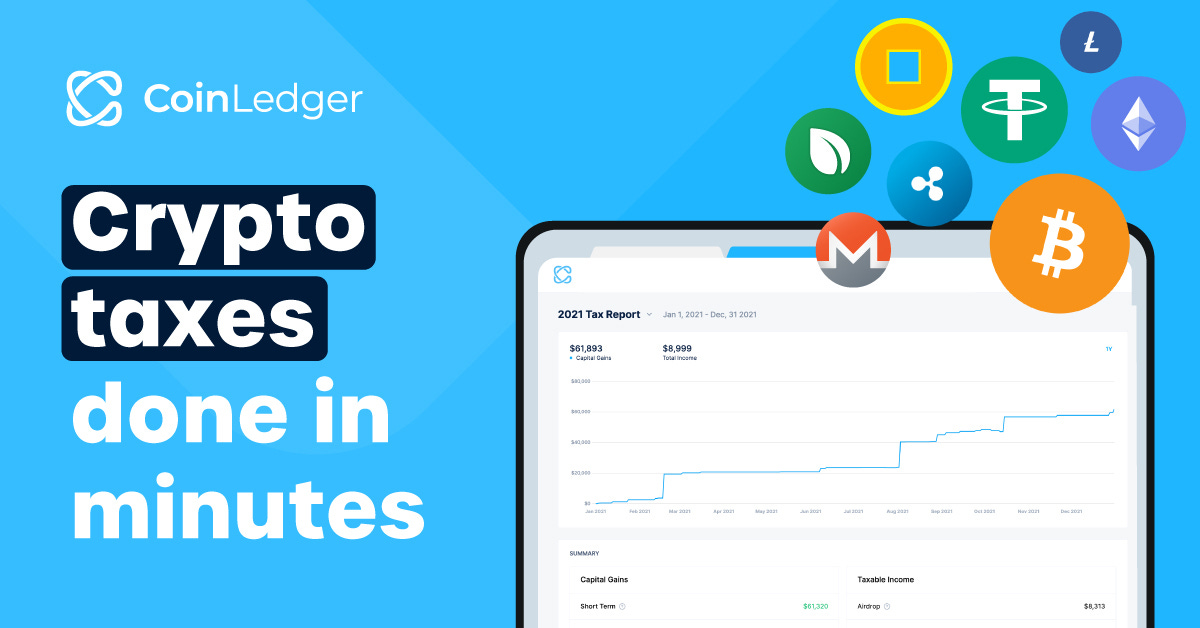Cryptocurrency Taxation and Self-Directed IRAs: How to Grow Crypto Gains Tax-Advantaged
If you’ve dipped your toes into the world of cryptocurrency and thought, “There’s got to be a smarter way to grow my portfolio without handing over so much to the IRS,” then welcome — you’re not alone. As crypto investors look beyond short-term trades and toward long-term wealth-building strategies, one tool stands out for its tax-saving potential: the Self-Directed IRA (SDIRA).
In this guide, we’ll break down what a Self-Directed IRA is, how it works with cryptocurrency, the tax implications you should understand, and why this strategy is becoming a favorite among savvy investors looking to protect their gains — legally — from Uncle Sam.
What Is a Self-Directed IRA?
A Self-Directed IRA is a type of individual retirement account that lets you invest in a wider range of assets beyond traditional stocks and bonds — including real estate, precious metals, and yes, cryptocurrency.
Unlike regular IRAs managed by brokers like Fidelity or Vanguard (which typically limit you to mutual funds and ETFs), SDIRAs are administered by custodians that allow alternative assets. That means you, the investor, get more control over where your retirement money goes.
Two Main Types:
Traditional SDIRA – Contributions may be tax-deductible, and earnings grow tax-deferred. You pay taxes later when you withdraw.
Roth SDIRA – Contributions are made with after-tax dollars, but all future growth and qualified withdrawals are tax-free.
With either type, the IRS requires a licensed custodian to hold the assets and maintain compliance — even if you’re directing the investment choices.
Why Invest in Crypto Through an SDIRA?
Let’s face it: crypto trading in a regular brokerage or wallet can rack up a lot of taxable events.
Every time you sell, convert, or even swap one token for another (say BTC to ETH), you’re triggering a capital gains tax. If you’re an active trader, this can add up fast. Even holding for over a year only gives you a lower long-term capital gains rate — it doesn’t eliminate taxes.
But inside an SDIRA?
✅ No taxes on trades (until you withdraw, if using a Traditional SDIRA)
✅ No tracking of gains or losses every time you rebalance
✅ Potential for tax-free growth forever (if using a Roth SDIRA)
This makes SDIRAs ideal for long-term crypto holders, DeFi farmers, or investors who believe Bitcoin and Ethereum will skyrocket in the next 10–20 years and want to compound that growth in a tax-sheltered account.
Tax Benefits of Using an SDIRA for Crypto
Here’s how the tax treatment works depending on which type of SDIRA you choose:
SDIRA Type Contributions Earnings Growth Withdrawals Traditional SDIRA Possibly tax-deductible Tax-deferred Taxed as ordinary income Roth SDIRA Made with after-tax $ Tax-free Tax-free if rules are followed
Let’s break it down:
With a Traditional SDIRA:
Suppose you invest $10,000 in Bitcoin.
It grows to $100,000 over 15 years.
You don’t pay any capital gains tax when trading or selling within the account.
But when you retire and withdraw that $100K, it’s taxed as ordinary income, not capital gains.
With a Roth SDIRA:
You pay taxes upfront on your $10K contribution.
But if it grows to $100K, you owe nothing on the $90K gain — ever — if you follow the rules (more on those soon).
How Crypto Fits in an IRA Legally
The IRS hasn’t banned crypto in retirement accounts, but there are strict custodial and compliance rules. You can’t just create a Coinbase account and call it your IRA.
Here’s how to do it the right way:
Step-by-Step Process:
Open an SDIRA with a qualified custodian that supports cryptocurrency (e.g., Alto IRA, iTrustCapital, Kingdom Trust).
Fund the account via rollover, transfer, or new contribution.
Set up an IRA LLC or checkbook control account (optional but common for more freedom).
Buy crypto through an exchange integrated with your custodian or through your IRA LLC’s wallet.
Track holdings and ensure no personal benefit (you can’t use crypto held in your SDIRA to pay for stuff or send to your cold wallet).
All income and capital gains stay inside the IRA, shielding you from immediate tax liabilities.
Important Tax Rules and Pitfalls to Avoid
Self-Directed IRAs sound amazing — and they can be — but there are some major traps to avoid that could blow up your tax benefits if you’re not careful.
1. Prohibited Transactions
If you transact with disqualified persons — like yourself, your spouse, or close family members — you can lose the IRA’s tax status altogether. For example:
Don’t use the crypto in your IRA to buy services from your own business.
Don’t move crypto to your personal wallet.
Even “just borrowing” coins from your IRA can trigger IRS penalties.
2. Custodial Compliance
The IRS requires a qualified custodian to oversee the IRA. You can’t act as your own custodian. You can direct investments, but the assets must be held by a third party.
That’s why you must use platforms with the proper licenses and structures in place — or set up an LLC under your IRA that follows the proper rules.
3. Unrelated Business Income Tax (UBIT)
If you use leverage inside your SDIRA — such as borrowing money to buy more crypto — your profits may be subject to UBIT. While rare for buy-and-hold strategies, UBIT can sneak in if you're earning income through mining, staking, or DeFi yield farming.
Speak to a tax advisor (like CoinFlask) to assess your risk if you're generating active income through your crypto.
4. Required Minimum Distributions (RMDs)
Traditional SDIRAs are subject to RMDs starting at age 73. That means you’ll have to start withdrawing a minimum amount each year — and paying taxes on it.
Roth SDIRAs, on the other hand, have no RMDs during your lifetime, making them a popular tool for passing down wealth.
Crypto IRA vs. Regular Crypto Wallet: A Tax Comparison
Let’s look at a side-by-side example.
Investor A: Buys $10K of ETH in Coinbase (non-IRA)
ETH grows to $100K.
When they sell, they pay long-term capital gains tax (~15%–20%).
Their tax bill: around $13,500 to $18,000.
Investor B: Buys $10K of ETH in a Roth SDIRA
ETH grows to $100K.
They sell inside the SDIRA — no capital gains triggered.
They withdraw funds in retirement tax-free.
Tax bill: $0.
Ideal Crypto IRA Strategies
Here are some common strategies crypto investors use within SDIRAs:
🚀 Long-Term Hold (HODL)
Perfect for Bitcoin and Ethereum believers. Buy now, sit tight for 10–30 years, and avoid every tax bill in between.
Active Trading
Rebalancing portfolios inside an SDIRA means no taxes on each trade. Be cautious with trading frequency — make sure it aligns with your retirement strategy.
DeFi Income (Use with Caution)
Some investors explore yield farming or staking inside SDIRAs. While possible, this raises UBIT risks and needs expert structuring. Many custodians don’t allow this yet, but the landscape is evolving.
Platforms That Support Crypto SDIRAs
If you're ready to explore this path, here are some leading custodians offering crypto SDIRA services:
Alto IRA – User-friendly, integrates with Coinbase.
iTrustCapital – Offers real-time crypto trading inside your IRA.
BitIRA – Focuses solely on digital assets.
Kingdom Trust – One of the original SDIRA custodians with crypto options.
Each platform has different fees, asset access, and ease of use — so research thoroughly or work with an advisor.
Final Thoughts: Is a Crypto IRA Right for You?
If you believe in the long-term value of crypto and want to grow your wealth without getting crushed by taxes, a Self-Directed IRA could be your smartest move yet.
For long-term investors: The ability to compound your gains tax-deferred (or tax-free) can add hundreds of thousands to your retirement pot.
For traders: No need to track every taxable event or tally up capital gains every April.
For retirement-focused investors: You can blend traditional financial planning with the disruptive power of blockchain — all within the protective umbrella of IRS-sanctioned structures.
But tread carefully. The IRS plays no games with compliance. Partner with experienced custodians, and when in doubt, consult a crypto tax advisor who understands the nuances — like CoinFlask.
TL;DR
Crypto inside a Self-Directed IRA gives you:
Tax-deferred or tax-free growth
No capital gains on trades within the IRA
Potential wealth-building power for long-term crypto believers
But it also requires:
Strict adherence to IRS rules
A qualified custodian
Caution around prohibited transactions and UBIT
With the right setup, a Crypto IRA can be a game-changing strategy for turning today’s digital assets into tomorrow’s tax-smart retirement.
DISCLAIMER: The views and opinions expressed are those of the authors and do not necessarily reflect the official policy or position of CoinFlask. Do your own research. This is not financial advice





